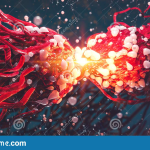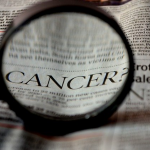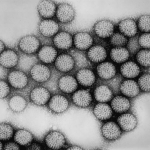Medicine, like the science that underlies it, is seldom transformed by “Eureka” breakthroughs; rather, it is most often a process of systematically accumulating knowledge and making incremental advances. Radiation treatment for breast cancer is a good example: New data has enabled us to revise and improve old approaches.
cancer treatment
Personalized, or precision, medicine applied to cancer treatment has its origins in studies of human genetics and the genetic mutations found in different cancers. A variety of personalized treatments continue to make advances in increasing patients' longevity and quality of life.
Perhaps you've noticed: Hospitals are asking you to come back for your routine care. Amongst the surge in caring for COVID-19 patients, elective care, especially remunerative procedural care, was pushed to the sidelines. One source suggests that overall cancer care has decreased by 37% during the pandemic.
Treatment advances are not easy to come by, especially in some hard-to-treat cancers like brain and triple negative breast cancer. New research, however, shows that infection with a virus could be key in making a promising treatment applicable to some cancers that were previously resistant.
The senior senator from Arizona, diagnosed with brain cancer in July, was hospitalized for "normal side effects of his ongoing cancer therapy." Here's what that means.
Injecting an ethanol-based gel directly into a specific type of tumor, called squamous cell carcinoma, resulted in a 100% cure rate in a hamster model.
Ovarian cancer is the most deadly cancer of the female reproductive tract — at least partly because it is not found until it has progressed. New research on mouse models of the disease suggests that there may be a way to halt that progression — by disinhibiting the body's immune system and allowing it to attack the tumor(s).
Palliative care services are misunderstood by clinicians and patients alike. However, research has shown that early discussions and referral palliative care soon after diagnosis yield significantly better results with respect to expectations, quality of life, less aggressive interventions and even survival.
Treating breast cancer with a very high dose of chemotherapy doesn’t improve survival any more than if a standard dose is used. And as guest writer Nicholas Wilcken writes, a recent paper has now capped decades of research debunking the idea that, if only we could give a high enough dose of chemotherapy, we could cure breast cancer.
The immune system of cancer patients fails to recognize aberrant cancer cells as foreign invaders. However, as researchers from the University of Oslo have observed, if grown in the presence of healthy donor cells, donor T cells can recognize cancer cells, which can be used as a potential guide for future cancer treatments.
A study published online in Annals of Surgical Oncology reports that a week-long course of accelerated partial breast irradiation (APBI) after lumpectomy reduced rates of breast cancer recurrence and led to a 10-year survival rate of 96 percent. APBI is a localized form of radiation treatment meant to eliminate breast cancer cells that may remain after lumpectomy surgery.
Prostate cancer is the most common type of cancer in men. In 2015, there are expected to be 220,800 new cases of prostate cancer in the United States. Prostate cancer is the second leading cause of cancer death in American men (lung cancer is by far the leading cancer killer).






